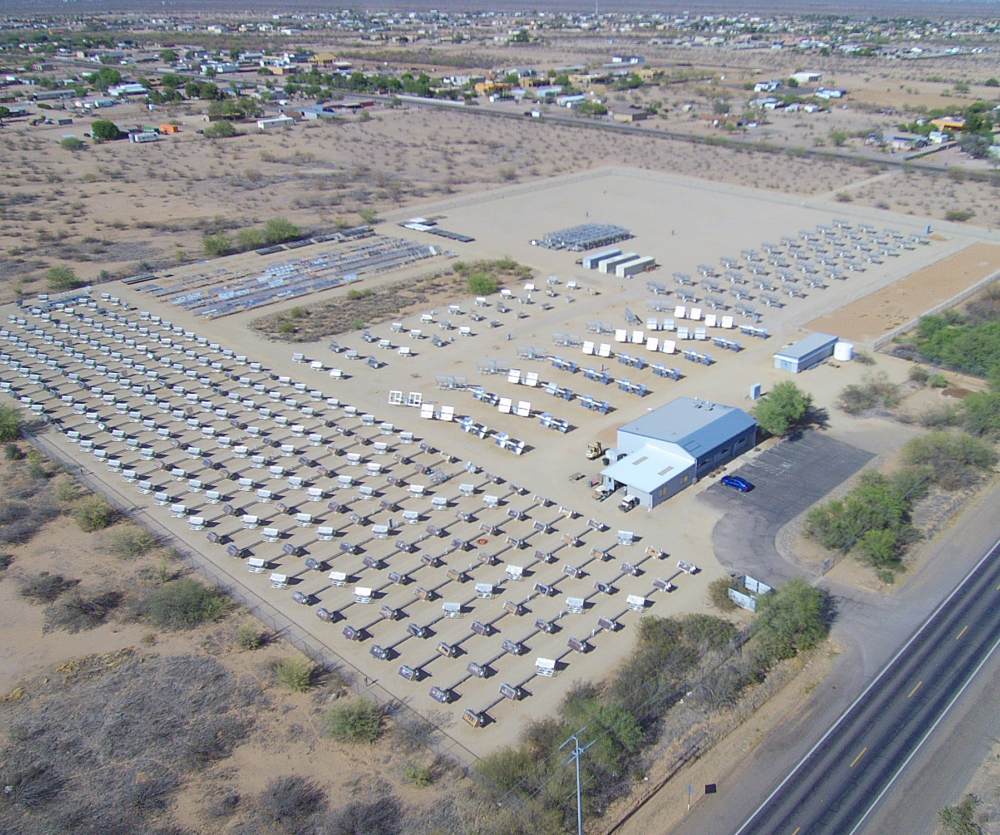
GMW3417: Testing Interior Materials Where It Matters Most
GMW3417 is General Motors' comprehensive test procedure for evaluating the durability of interior automotive materials when exposed to real-world sun exposure. This popular test method guides manufacturers through natural weathering tests conducted in extreme climates like Arizona and Florida, where intense heat and UV radiation push materials to their limits. Using specialized glass-enclosed fixtures, otherwise known as an Automotive Interior Material box (AIM Box), that simulate actual vehicle interior conditions, the procedure assesses everything from dashboard components to door panels for color fading, cracking, and other degradation.
Whether you're developing new interior trim materials or validating existing components, GMW3417 provides OEMs and their suppliers with a proven test method to ensure durability before hitting the market.
Key Test Parameters

Locations
GMW3417 leverages two of North America's harshest climates to accelerate weathering testing. Phoenix, Arizona (Code L1) delivers desert sun and extreme heat, while Miami, Florida (Code L2) combining subtropical sunlight and heat with high humidity that can accelerate chemical degradation and moisture-related failures.

Test Equipment
Choose from three fixture types designed to match your testing intensity:
- Static boxes (F1) – Consistent angled exposure for baseline testing
- Single-axis tracking (F2) – Follows the sun's daily path for enhanced radiation levels
- Dual-axis tracking with mirrors (F3) – Delivers maximum sun intensity for accelerated aging
All fixtures feature temperature-limiting capabilities and automotive glass glazing to authentically simulate real-world vehicle interior conditions.

Glass Types
Choose the glass type that matches your component's actual vehicle location:
- Clear tempered flat glass (G1) – 3 mm thickness for straightforward solar transmission, ideal for side windows
- Automotive windshield laminated glass (G2) – 5.8 mm construction replicates authentic windshield UV filtering
Select the appropriate glass type based on where your parts sit in the vehicle to ensure test conditions accurately simulate real-world sun exposure.

Temperature
Select from six temperature options to match your component's vehicle location and heat exposure:
- Uncontrolled ambient (T1) – Natural temperature fluctuation
- Controlled options (T2-T6) – Thermostatically regulated from 77 °C up to 110 °C
Each controlled fixture uses air circulation to maintain precise temperature maxima, delivering realistic thermal stress without over-testing. Match your selection to where parts live in the vehicle—dashboards demand extreme heat testing, while lower panels require milder conditions.
Test smart with temperatures that simulate real-world exposure.

Specimen Positioning
Proper specimen placement is critical for consistent, reliable results:
- Specimens are mounted 50-100 mm below the glass for uniform light and temperature distribution
- Requires 150 mm clearance from left/right edges and 100 mm from top/bottom
Strategic placement eliminates edge effects, shading, and exposure variation, ensuring that every sample experiences identical controlled conditions.

Evaluations
Appearance Assessment:
- Visual color change rated on a standardized 2-10 scale by trained evaluators
- Objective color measurement via spectrophotometer (L, C, H, a, b values and deltas)
- Gloss tracking with calibrated glossmeters to monitor surface deterioration
Physical Degradation Documentation:
- Cracking, warping, blistering, chalking, and structural failures
This dual approach ensures that multiple degradation modes are analyzed, from subtle color shifts that customers may notice, to critical failures that impact safety and function.

Duration
Florida exposures typically run for a set number of months, while Arizona exposures are based on Temperature Normalized Radiation (TNR) values. Using TNR, which combines test temperature with measured solar radiation, helps remove seasonal variability and ensures consistent accelerated outdoor testing.

Exposure Duration
GMW3417 defines exposure duration for outdoor weathering tests based on any of a number of factors:
- Solar radiant exposure - specified dose for total or specific wavelength bands
- Temperature-normalized radiant exposure - this calculation combines temperature and radiation to account for seasonal temperature variance, especially on Fixed Tilt Tracking tests.
- Predefined property change in materials - color, gloss, strength loss, or others
- Fixed time period - days or even months
Other mutually agreed-upon environmental parameters can be used as well.

Why Test to GMW3417?
GMW3417 testing protects your brand by catching material failures before they reach production. This helps prevent costly warranty claims and customer complaints about faded or degraded interiors. This standard compresses years of real-world sun exposure into a shorter time frame, helping you meet OEM requirements while making faster, more confident material decisions.
Pros and Cons of GMW3417
- Realistic light source
- By exposing test specimens to actual sunlight behind glass, GMW3417 provides realistic conditions.
- High temperatures
- GMW3417 exposes materials to the same extreme heat that interior automotive parts experience in service
- Cost-effective
- Natural, accelerated outdoor testing can be a cost-effective way to understand your material's durability.
- Specific use case
- While GMW3417 is excellent for automotive interior materials, it is not well-suited to testing for other applications

Q-Lab's Natural Outdoor Weathering Test Facilities
Q-Lab offers outdoor exposure testing programs at our internationally-recognized, ISO 17025-accredited benchmark locations in Florida and Arizona. Weathering exposures at these sites are not only realistic; they also could be considered a form of accelerated weathering testing (depending on where the product will be used outdoors) and are the best way to verify laboratory test results. Q-Lab also provides all users with climate data to enhance interpretation of data collected during outdoor exposures. See our Outdoor Testing brochure for more information on these sites and our Testing Services brochure to learn about our full range of weathering testing services.
More GMW3417 Resources
Standards
Review setup and performance information on key international and OEM test standards from ASTM, ISO, SAE, JIS, GB, and more.
Document Library
Browse Q-Lab’s extensive library of weathering testing literature and technical content.
Contact Q-Lab
For information on Q-Lab's testing services options, contact our team of experts today!